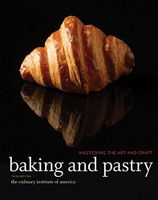Label
All
0
Clear all filters
🔥 Celebrate new books on our BBQ & Grilling shelf with 25% off ckbk membership 🔥
Converting to a Common Unit of Measure
Appears in
By Culinary Institute of America
Published 2015
To convert measurements to a common unit (by weight or volume), use the chart on the next page. This information can be used both to convert scaled measurements into practical and easy-to-use formula measures and to determine costs. For additional conversion charts, see Appendix C: Conversions, Equivalents, and Calculations.
For some ingredients, straightforward multiplication or division is all that is needed. To increase a formula for poached pears from five servings to fifty, for example, you would simply multiply five pears by ten; no further adjustments are necessary. But once you have converted them, some other ingredient amounts may need some fine-tuning. You may need to round off a result or convert it to the most logical unit of measure. And measures for ingredients such as thickeners, spices, seasonings, and leavenings, for example, should not always be simply multiplied or divided. If a formula that makes six 6-in/15-cm cakes requires 1/2 oz/14 g of baking powder, it is not necessarily true that you will need 3 oz/90 g of baking powder to leaven six times the amount of the same batter if you are mixing it all in one batch. In such cases, the only way to be sure is to test the new formula and adjust it until you are satisfied with the result.
Part of
Advertisement
Related Recipes
-
-
-
-
Related Reference
-
-
-
-
Advertisement
The licensor does not allow printing of this title



